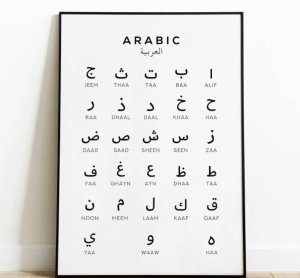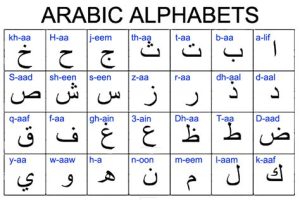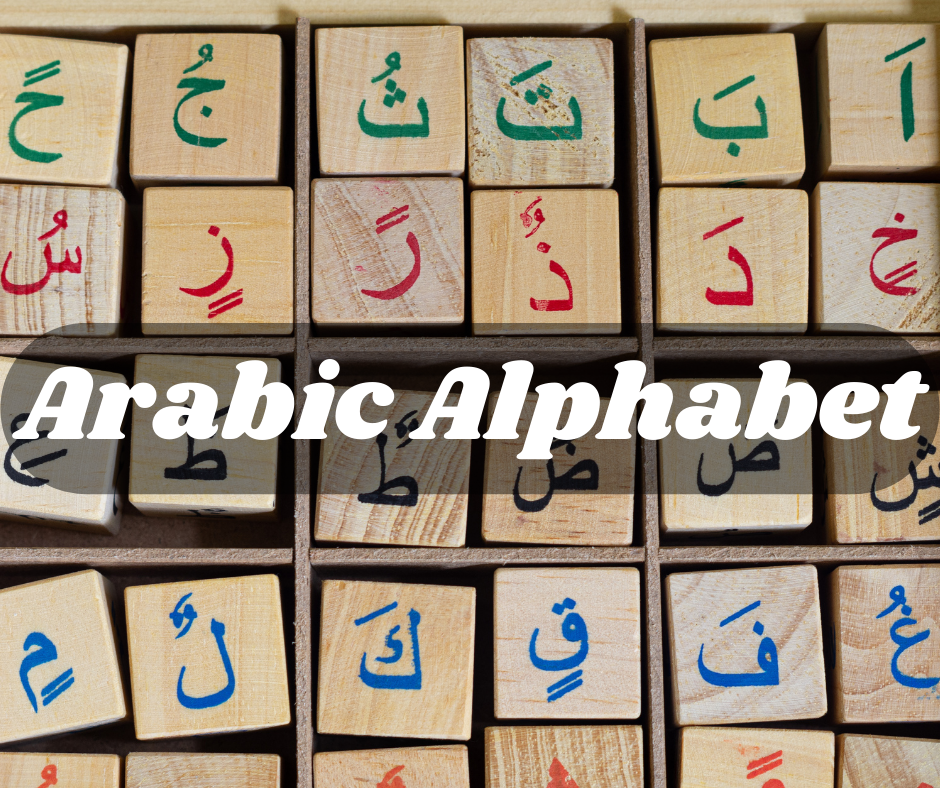Learning the Arabic alphabet is an essential step for anyone beginning their journey with the Arabic language. The Arabic script, written from right to left, consists of 28 letters. Unlike the Latin alphabet, Arabic letters can take different forms depending on their position in a word: initial, medial, final, or isolated.

Basic Structure and Characteristics
Direction and Cases:
– Arabic is written from right to left, which might feel unfamiliar initially but becomes natural with practice.
– Unlike English, Arabic doesn’t differentiate between uppercase and lowercase letters.
Forms of Letters:
– Each letter can appear in four forms: isolated, initial, medial, and final. This variation is due to the cursive nature of Arabic writing, where letters within a word are connected.
Distinctive Features:
– Arabic letters are primarily consonants. Vowels are indicated with diacritical marks rather than separate letters, and these marks are often omitted in everyday writing but are present in religious texts and educational materials.

Learning Tips
Use Mnemonics:
– Creating mnemonics can help distinguish similar-looking letters. For example, the letter ب (Baa) can be remembered as a “Boat with a paddle,” and ت (Taa) as a “Boat with Two people”.
Practice Writing:
– Practice writing each letter in its various forms. This helps in understanding how they connect within words and improves reading fluency.
Audio and Visual Aids:
– Utilize resources that provide visual charts and audio pronunciations. Hearing the correct pronunciation and seeing the letter can aid in memorization and proper usage.
Practical Steps
Familiarize with the Alphabet:
– Start by learning the isolated forms of each letter. Resources like interactive charts can be very helpful for this initial stage.
Understand Contextual Forms:
– Move on to learning how each letter changes form when it appears at the beginning, middle, or end of a word. This step is crucial for reading and writing actual Arabic text.
Practice Reading and Writing:
– Engage in regular practice by reading simple texts and writing out words. This will reinforce your understanding and help transition from theoretical knowledge to practical skill.
Conclusion
Mastering the Arabic alphabet is a foundational step that significantly eases further learning. With dedicated practice and the right resources, you can quickly become proficient in recognizing and using Arabic letters. Whether you’re planning to learn Modern Standard Arabic or a regional dialect, the script remains consistent, making your initial efforts universally applicable across different forms of the language.

